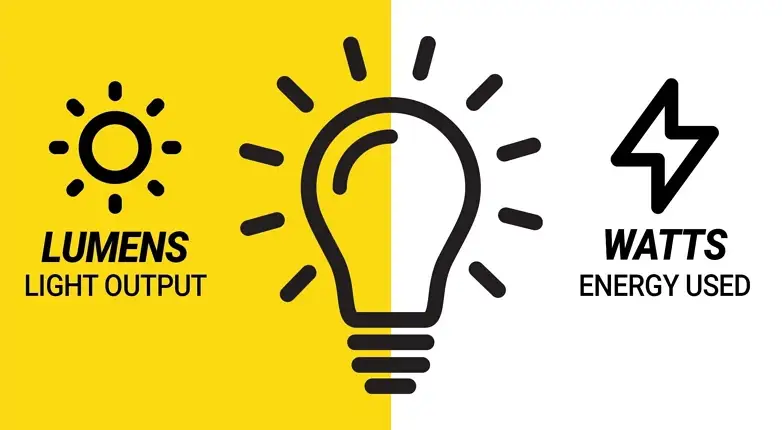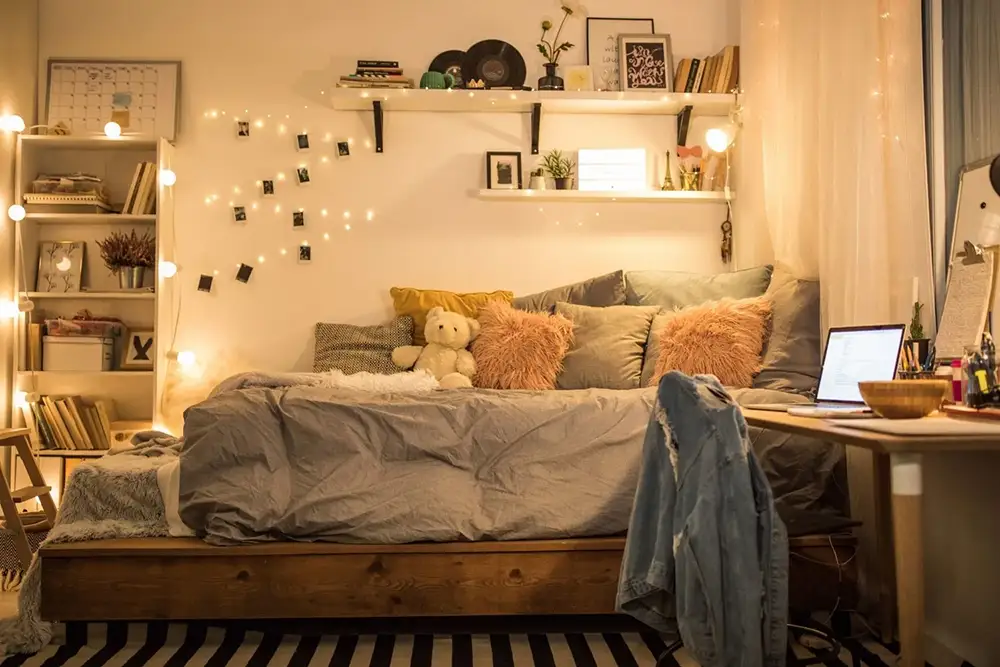From the toolbox of a Port Macquarie electrician
As a local electrician here in Port Macquarie, one of the most common questions I get from homeowners is, “How bright is this light?” Or, even more frequently, “How many watts do I need to light up my kitchen?” It’s a fair question—especially for those of us who grew up during the incandescent bulb era when watts were the go-to measure for light output.
But in today’s world of energy-efficient lighting, lumens have taken over as the true measure of brightness. So let’s unpack the difference between lumens and watts, why it matters for your home or business, and how to make informed lighting decisions.

Watts: What We Used to Know
Back in the day, the rule of thumb was simple:
- 40-watt bulb = soft, ambient glow
- 60-watt bulb = decent for a bedroom or lounge
- 100-watt bulb = bright enough for kitchens or bathrooms
The more watts, the brighter the bulb—right? Well, not exactly. Watts simply measure energy consumption, not light output. That 100-watt incandescent bulb you used in the kitchen? It was bright, yes—but it was also guzzling electricity and generating a lot of heat.
When compact fluorescents (CFLs) and LEDs hit the market, they changed everything. Suddenly, a 10-watt LED could produce the same brightness as a 60-watt incandescent. That’s where lumens come in.
Lumens: The New Standard for Brightness
Lumens are the real measure of brightness. One lumen is roughly the amount of light emitted by a single candle one foot away. More lumens = more light.
Here’s a quick comparison to help you translate wattage into lumens using LED technology:
| Incandescent Watts | Approximate Lumens | LED Watts (Approx.) |
|---|---|---|
| 40W | 450 lm | 6-9W |
| 60W | 800 lm | 8-12W |
| 75W | 1100 lm | 10-15W |
| 100W | 1600 lm | 14-20W |
As you can see, you get the same brightness with a fraction of the energy when using modern LEDs. So if your goal is brightness, forget watts—focus on lumens.
Why It Matters in Port Macquarie Homes
In Port Macquarie, we get beautiful natural light during the day, but at night, proper lighting is essential for function and ambience. I’ve worked in homes around Lake Innes, Lighthouse Beach, Thrumster, and Settlement Point where clients were upgrading their lighting and still thinking in watts.
This confusion often leads to under- or over-lighting a space. Someone might replace their old 60-watt bulbs with 6-watt LEDs thinking they’ll get the same result—but not all LEDs are equal, and without checking the lumens, they could be left in the dark (literally).

Choosing the Right Lumens for Each Room
Here’s a general guide I often give clients when selecting lights for their home:
Living Room / Lounge:
1,500 – 3,000 lumens total
Use a combination of ceiling lights, lamps, and accent lighting to create a warm, comfortable feel.
Kitchen:
4,000 – 8,000 lumens total
You need task lighting over benches and stoves. LED downlights and strip lighting under cabinets work great here.
Bedroom:
2,000 – 4,000 lumens total
Go for a soft, relaxing tone. Use bedside lamps around 400-800 lumens and a central light source around 1,500 lumens.
Bathroom:
4,000 – 6,000 lumens total
Good lighting around the mirror is a must. I recommend a cool white colour temperature with high lumen output.
Outdoor / Garden:
Variable (200 – 3,000 lumens)
For pathways and security lights, go for brighter fittings (1,000–3,000 lumens). For decorative garden lighting, 200–600 lumens can be perfect.
Lumen Efficiency: It’s Not Just About Brightness
When choosing lights, look at the lumens per watt (lm/W). This tells you how efficiently the light turns energy into brightness. A high-quality LED may produce 100–120 lumens per watt, while cheaper ones might only give you 70–80.

As an electrician, I’ve installed countless brands of lighting, and let me tell you—not all LEDs are created equal. Sometimes the cheaper products just don’t last or give off the brightness you expected.
Always read the packaging or specs, and aim for high-efficiency ratings if you want to save money long-term.
Pro Tips From the Jobsite
Here are a few real-world lessons from years of electrical work in Port Macquarie:
1. Don’t Mix Colour Temperatures
A cool white (5000K) light next to a warm white (2700K) can throw off your whole lighting design. Cool white has about 10% higher lumen output than warm white for the same wattage. Choose one tone per room or for your entire house.
2. Use Dimmers—But Make Sure They’re Compatible
Not all LEDs work with all dimmers. If you want mood lighting, check compatibility or have an electrician (like me at Port Sparky) recommend a quality dimmable LED and matching switch.
3. Outdoor Lights Need the Right IP Rating
Especially in coastal areas like Port Macquarie, exposure to salt air can corrode fittings. Always use IP65 or above for outdoor lighting to prevent damage.
4. Don’t Under-Light Large Rooms
Open-plan areas need multiple sources of light. Relying on a single globe in the middle of the ceiling will leave dark corners and shadows.
Conclusion: Think Lumens, Not Watts
So, next time you’re shopping for a new light or updating your home’s lighting system, ignore the watts and go straight to the lumens. You’ll get better results, lower power bills, and lighting that truly suits your space.
And if you’re in Port Macquarie and need help choosing or installing the right lighting—whether it’s a full home reno or just updating a few fittings—get in touch with your local expert. At Port Sparky, we’ll make sure your home is lit efficiently, beautifully, and safely.